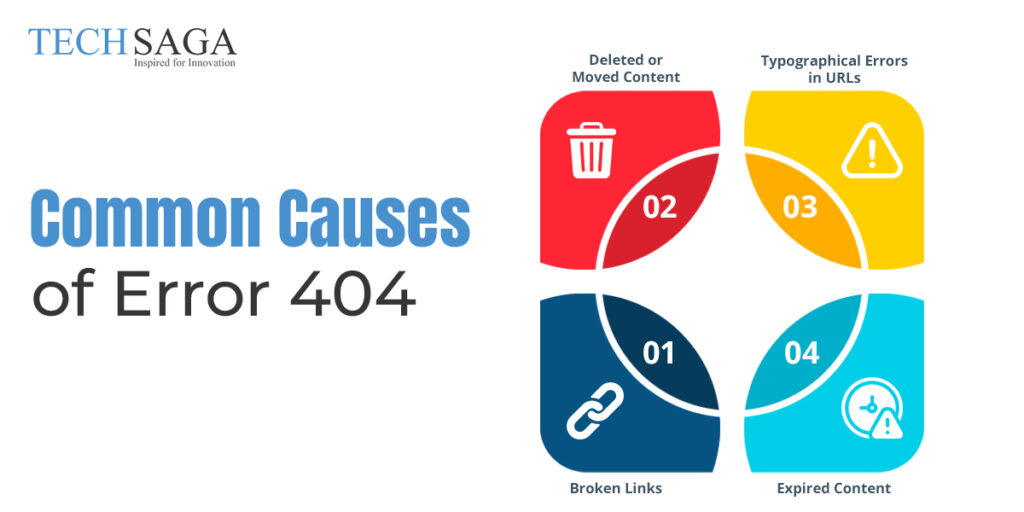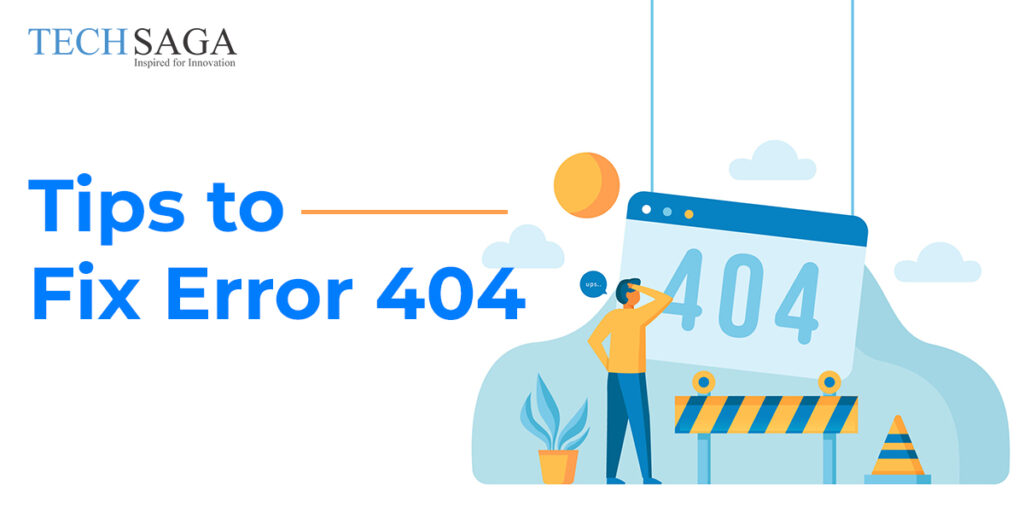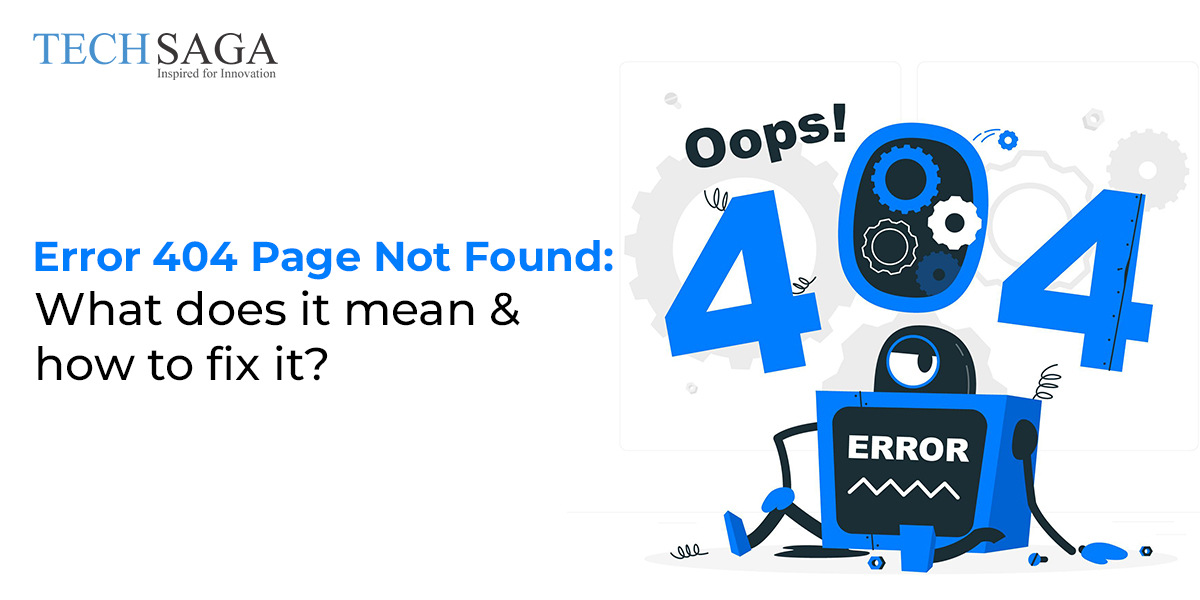Team Techsaga
Gain valuable insights and stay updated with the latest innovations through our engaging blog. Explore trends, technology advancements, and expert opinions to navigate the ever-evolving world of IT.
Error 404 Page Not Found – What Does it Mean & How to Fix It?
Error 404 – Page Not Found messages are a common frustration for internet users worldwide. This error occurs when a requested webpage cannot be located on the server, disrupting the browsing experience. Understanding the significance of Error 404 and learning how to address it is crucial for a seamless online experience, especially in the realm of technical seo. By delving into the causes and solutions of Error 404, users can navigate the internet more effectively and minimize disruptions to their browsing sessions.
In this comprehensive guide, we’ll delve into the intricacies of Error 404 and provide practical solutions to resolve it.
What is Error 404?
Error 404, also known as “404 Not Found,” is an HTTP status code that indicates the web server could not find the requested webpage. When you click on a link or type a URL into your browser, the server attempts to locate the corresponding webpage. If the server cannot find the page, it returns an Error 404 response, informing you that the requested resource is unavailable.
Common Causes of Error 404:

- Broken Links: One of the most common reasons for encountering Error 404 is a broken link. This occurs when a link directs users to a webpage that no longer exists or has been moved to a different URL without proper redirection.
- Deleted or Moved Content: Website administrators may delete or relocate webpages, resulting in broken links and Error 404 messages for users trying to access the outdated URLs.
- Typographical Errors in URLs: Misspelling a URL or entering an incorrect address in the browser’s address bar can lead to Error 404. Double-checking the URL for accuracy is crucial to avoid this issue.
- Expired Content: Sometimes, webpages are temporarily removed or taken down for maintenance, resulting in Error 404 until the content is restored.
Tips to Fix Error 404:

1. Check the URL-
Before exploring other troubleshooting methods, verify that you’ve entered the correct URL. Even a minor typographical error can result in Error 404. If you suspect a typo, correct it and try accessing the webpage again.
2. Refresh the Page-
Occasionally, Error 404 may occur due to temporary server issues or internet connectivity problems. Refreshing the page (Ctrl + R or Command + R) can sometimes resolve the error by prompting the server to reattempt loading the webpage.
3. Search for the Content-
If you encounter Error 404 while navigating a website, use the site’s search function to locate the desired content. Alternatively, you can browse the website’s navigation menu or sitemap to find relevant pages. This user-friendly approach contributes to effective digital marketing strategies by ensuring easy access.
4. Check for Broken Links-
Using internet tools or plugins, website owners should routinely check their sites for broken links. Identifying and fixing broken links can prevent visitors from encountering Error 404 and improve the overall user experience.
5. Implement 301 Redirects-
When permanently moving or deleting content, implement 301 redirects to automatically direct users from the old URL to the new location. This ensures that visitors are seamlessly redirected and prevents them from encountering Error 404.
6. Customize Error 404 Pages-
Website owners can customize their Error 404 pages to provide users with helpful information and guidance. Adding a friendly message, search bar, and links to popular pages can assist users in navigating the site despite encountering an error.
7. Monitor Website Performance-
Regularly monitoring website performance metrics, such as page load times and server uptime, can help identify potential issues that may contribute to Error 404 occurrences. Utilizing website monitoring tools and services can provide valuable insights into the health and performance of your site.
8. Implement 404 Error Tracking-
Implementing 404 error tracking enables website administrators to identify and track the occurrence of Error 404 pages. By analyzing these reports, administrators can pinpoint recurring issues, such as broken links or missing content. Additionally, corrective action to improve the user experience.
9. Provide Contact Information-
Including contact information, such as a support email or phone number, on the Error 404 page allows users to reach out for assistance if they encounter persistent issues or need further help navigating the website.
10. Educate Users-
Educating users about the potential causes of Error 404 and how to avoid them can empower them to navigate the internet more effectively. Tips such as bookmarking frequently visited pages, and using reputable links. additionally, double-checking URLs can help users minimize their exposure to Error 404 messages.
Conclusion:
Error 404 is common on the internet, indicating that the requested webpage is unavailable. Understanding the causes of Error 404, such as broken links, expired content, and typographical errors. Therefore, this empowers users to troubleshoot and resolve the issue effectively. With the above-mentioned tips, you can mitigate Error 404 errors and improve website performance, which is essential for search engine optimization. Remember, proactive website maintenance and attention to detail are key to minimizing the occurrence of Error 404. Moreover, providing users with a seamless online experience.




